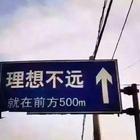
S 2020.09.23
介绍: This is Scientific American's 60-second Science, I'm Susanne Bard.
Anyone who commutes by car knows that traffic jams are an inevitable part of life. But humans are not alone in facing potential backups. Ants also commute—between their nest and sources of food. The survival of their colonies depends on doing...
介绍: This is Scientific American's 60-second Science, I'm Susanne Bard.
Anyone who commutes by car knows that traffic jams are an inevitable part of life. But humans are not alone in facing potential backups. Ants also commute—between their nest and sources of food. The survival of their colonies depends on doing this efficiently.
"The more they are, the more food they're going to bring back. But at the same time, they might end up with traffic jam because there are too many of them."
Arizona State University mathematician Sebastien Motsch. When humans commute, there's a point at which cars become dense enough to slow down the flow of traffic, causing gridlock. Motsch and his colleagues wanted to know if ants on the move could also get clogged. So they manipulated traffic density by constructing bridges of various widths between a colony of Argentine ants and a source of food. Then they waited and watched.
这里是科学美国人——60秒科学系列,我是苏珊娜·巴德。
开车通勤的人都知道,交通堵塞是生活中不可避免的一部分。但并非只有人类面临潜在的堵塞问题。蚂蚁也会通勤——往返于巢穴和食物来源之间。蚂蚁群体的生存依赖于高效通勤。
“蚂蚁越多,它们带回来的食物就越多。但与此同时,它们可能会因个体数量太多而最终陷入堵塞。”
亚利桑那州立大学的数学家塞巴斯蒂安·莫奇说到。就人类通勤而言,当汽车密度达到足以减缓交通流量的程度时,就会导致交通堵塞。莫奇及其同事想知道,移动中的蚂蚁是否也会堵塞。因此,他们通过在阿根廷蚁群和食源地之间建造不同宽度的桥梁来控制交通密度。之后他们便等待观察。
